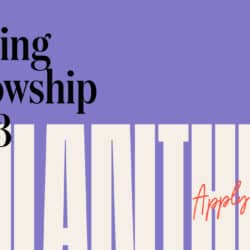As The Philanthropist Journal enters its sixth decade, the Agora Foundation (the publisher of The Journal) remains committed to providing a publication that is a strong and relevant voice for the charitable and non-profit sector into the future. We are inviting our readers, partners, and the wider sector into our planning and welcome your input!
In 2022, The Philanthropist Journal marked its 50th anniversary by looking both back and forward – revisiting the history of the voluntary sector, thinking about the transformative moments of 1972 through 2022, reflecting on philanthropy and the language that informs our work, and looking beyond 2022.
As The Philanthropist Journal enters its sixth decade, the Board of Directors of the Agora Foundation (the publisher of The Journal) remains committed to providing a publication that is a strong and relevant voice for the charitable and non-profit sector into the future.
The Board of Directors of the Agora Foundation remains committed to providing a publication that is a strong and relevant voice for the charitable and non-profit sector into the future.
Drawing on our expertise of writing and telling stories that “build community and instigate discussion, dialogue, and debate,” we have asked Tim Harper, one of our senior writers, to write three to four pieces that engage a wide range of voices and perspectives that will inform what The Journal looks like in the future.
We are inviting our readers, partners, and the wider sector into our planning. And we are experimenting with an approach to strategic and organizational planning that is new for us – for the board, the staff team, and our writer.
We are inviting our readers, partners, and the wider sector into our planning.
The Board of Directors will see each piece as it is completed by Tim but will not change the content, even if it makes us uncomfortable (that is consistent with our approach to writing with journalists). We don’t have to agree with everything that we publish and are committed to listening to and reflecting on what we hear and looking at how that informs our planning for The Journal in terms of governance and our organizational and editorial work.
The Board of Directors and the editorial team will engage in an iterative process with Tim, along with you, to ask questions and reflect upon what we are hearing, what that tells us about our work and the future of The Philanthropist Journal, and then ask more questions. And we don’t need to have all the answers – we just have to be comfortable holding and reflecting on the questions that emerge and what we think that tells us about our work and contribution.
It is not a question of fundamental change but looking to the future and the role and contribution of The Journal in the next five years. We want to explore:
- Where have we come from?
- Where are we now and what is this moment in the life of the sector asking of us?
- Where do we want to be – and need to be?
- How do we get there?
- Who do we engage in the conversation?
Our first piece in the series is a context-setting one, starting with the question of where we have come from as a journal. So, our development in the context of the evolution of the sector over a half century – how we got here and how that serves as a point of departure for where we go, what the sector needs, and what this moment is asking of us.
Thank you in advance for your support and engagement. Stay tuned for ways you can provide input as we move forward with our planning.

